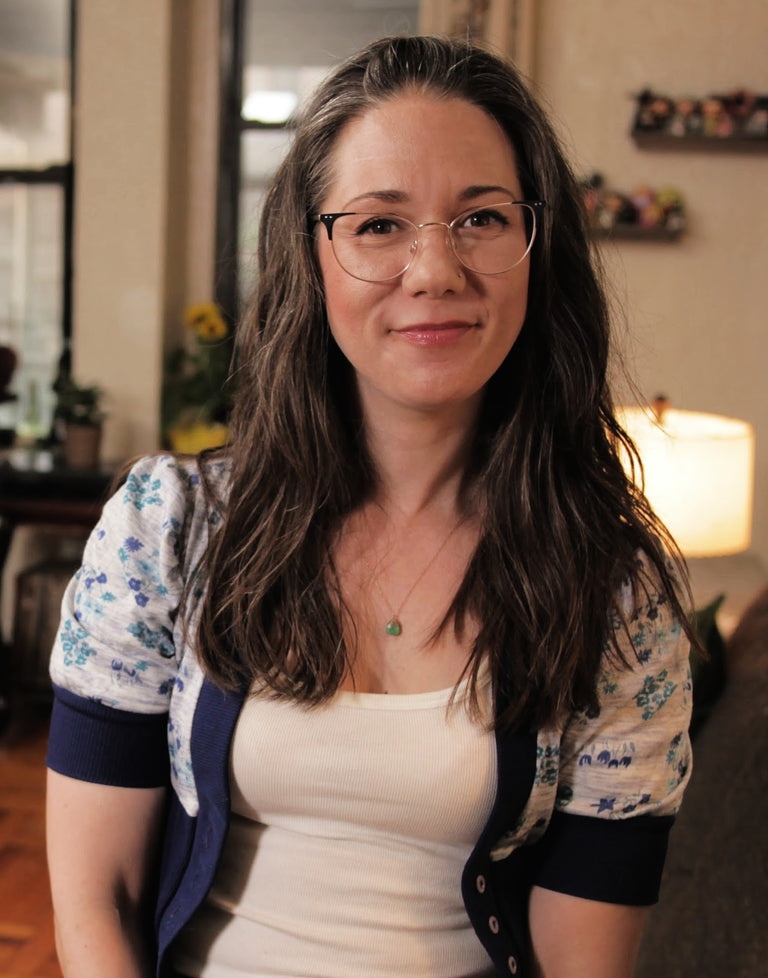Although it can be extremely unpleasant to deal with, hair loss among both men and women is very common. It’s estimated that about 80% of men and nearly 50% of women will experience hair loss in their lifetimes.
Read on to better understand balding and the signs to look for if you’re concerned about it.
Balding vs. Hair Loss: What’s the Difference?
Often these two terms are used interchangeably, but when looking at it from a medical lens, they are quite different.
“Hair loss is a general term used to describe any type of hair shedding; balding specifically refers to the progressive loss of hair follicles,” said Dr. Cheryl Rosen, a board-certified dermatologist with BowTiedLife.
Balding causes hair loss, but not all hair loss is balding. With balding, the loss of follicles is often permanent. While balding is most common in men, it can happen to both males and females, and it typically appears in a common and distinguishable pattern.
Hair loss, on the other hand, can refer to shedding happening all over the scalp, or it can be concentrated in specific areas. It commonly happens to both men and women. And with hair loss, when the underlying cause is addressed, hair growth typically resumes. Some common causes of hair loss include:
- Thyroid disorders
- Medications
- Nutritional deficiency
- Stress
- Hormonal changes
- Illnesses like flu or COVID
“Balding is usually gradual, while hair loss can be sudden,” said Dr. Firdous Ibrahim, a registered medical aesthetic physician and founder of Aesthetic Visions. In addition, the treatments for hair loss and balding will vary depending on the underlying cause.
Shop: The Best Products for Thinning Hair
What Causes Balding?
Balding, or the progressive loss of hair follicle function, can be caused by a variety of factors. While this list is not exhaustive, it does include some of the most common causes of balding.
Androgenetic Alopecia
Also known as androgenic alopecia and male or female pattern balding, androgenetic alopecia or AGA is the most typical cause of balding. This type of balding is a result of genetics, aging and hormones called androgens.
“Androgens cause hair follicles to shrink, which leads to a decrease in the amount of hair that they produce,” explained Dr. Rosen. Over time the follicles stop producing hair altogether, resulting in baldness.
Men who have AGA will notice a pattern of balding that typically includes a receding hairline and thinning at the crown. Eventually, it progresses to complete balding at the top of the head.
Women with AGA often experience a widening part and thinning temples, along with thinning that happens over the entirety of the scalp. Women with AGA don’t typically experience complete balding.
More: Androgenetic Alopecia Explained
Alopecia Areata
Alopecia Areata, or AA, is an autoimmune condition that causes the immune system to attack hair follicles. It most often results in small bald patches on the scalp and possibly other body hair. While it can resolve on its own or with the aid of medications, alopecia areata can also worsen into two forms of complete baldness called alopecia totalis and alopecia universalis.
Get the Full Picture: What Is Alopecia Areata?
Tinea Capitis
Tinea capitis, or ringworm of the scalp, is a fungal infection that can cause bald patches on your scalp. It is often resolved with oral medication and medicated shampoo, but it can cause permanent damage to hair follicles, resulting in baldness in the affected areas.
Scarring Alopecia
Scarring alopecia is a family of inflammatory hair loss conditions that cause permanent scarring on the scalp that may permanently damage follicles and lead to balding. Frontal fibrosing alopecia and central centrifugal cicatricial alopecia are two common forms of scarring alopecia.
More: What You Should Know About Scarring Alopecia
Traction Alopecia
Traction alopecia is a form of hair loss that happens when hair follicles undergo repetitive stress, often a result of tight hairstyles like braids, buns or ponytails. If treated early, this condition may not result in permanent hair loss, but over the long term, affected hair follicles might stop producing hair altogether.
Read: Traction Alopecia Explained
7 Signs of Balding to Look Out For
If you’ve noticed changes in your hair or visible hair loss, you might be concerned that it could be balding. These are a few common signs of balding to look out for.
1. Hair Texture Changes
If you’ve noticed that your hair seems finer and softer, it could be a sign that your follicles are undergoing a process called miniaturization — a gradual loss of follicle function that can eventually result in a total loss of hair shaft growth.
2. Difficulty Styling
In the same way that miniaturization can cause your hair texture to feel finer and softer, your hair also might be harder to style than it used to. If your hair stops holding heat styling, it could be an early sign of balding.
3. Receding Hairline and Widening Part
Men with AGA will typically notice a receding hairline, whereas women might notice their part widening. In either case, if you see more scalp than you used to, it could be a sign of balding.
4. Thinning Crown or Temples
Similarly, if you’re a man experiencing crown hair loss or a woman who is noticing thinning temples, these could be early signs of balding.
5. Increased Shedding
Increased shedding is a common sign of hair loss and balding, and it could have several different causes. If you’ve noticed an increase in shedding — such as loose hairs on your clothing or larger clumps in the shower drain — it’s important to investigate the root cause because it may be a sign of balding.
6. Loss of Density
Maybe you can see more scalp than you used to, or your ponytail is thinner than you remember. Either way, a loss of density can be a particular clue for women with AGA, who tend to experience thinning over the full head (also called diffuse thinning). Diffuse thinning can happen with other sudden hair loss conditions like telogen effluvium, so it’s important to uncover the underlying cause.
7. Patchy Bald Spots
Patchy bald spots could be a sign of conditions like alopecia areata or tinea capitis. Left untreated, these conditions can cause permanent balding.
Learn: Every Hair Loss Trigger Explained
When Should I See a Doctor?
Hair loss and balding are complex and can have any number of root causes. If you’ve noticed any of the signs of hair loss mentioned above or any change in your hair that seems out of the norm, your best bet is to see a doctor.
“They’ll be able to recommend and prescribe the best form of treatment,” said Dr. Enrizza P. Factor, a clinical dermatologist. “The sooner you receive treatment, the faster you’ll be able to stop the loss and possibly even regrow some of your hair.”
How Is Balding Treated?
Unfortunately, there’s no cure for balding. With that said, there are a variety of hair loss treatments used to slow or stop the balding process and in some cases, encourage new hair growth.
Medications
Oral and topical medications are very common medical treatments for androgenetic alopecia. Topical solutions like minoxidil and oral tablets like finasteride can be used daily to help slow hair loss and encourage hair regrowth. However, you might experience unpleasant side effects from these options.
Hair Transplant Surgery
This can be an effective, albeit expensive, way to treat balding. “There are two different types of hair transplant for men and women: follicular unit extraction (FUE) and follicular unit transplantation (FUT),” explained Dr. Asim Shahmalak, a hair transplant surgeon and the founder of Crown Clinic. Both methods have their pros and cons, and since balding may be progressive, you might need additional hair transplants over time.
Platelet-Rich Plasma (PRP) Injections
This is a relatively easy procedure that involves collecting platelets from your own blood and then injecting them directly into affected areas of the scalp. “PRP can help improve hair density and thickness,” said Dr. Samuel Hetz, medical doctor and medical director of Concept Medical. By stimulating underactive follicles, new growth could be encouraged with this treatment. While PRP has been used for decades to treat other conditions, there hasn’t been a lot of research done to evaluate how effective it is for hair loss.
Laser Therapy
This hair loss treatment is generally considered safe and well-tolerated. Also called low-level, red light or cold laser therapy, this treatment is thought to invigorate blood circulation to follicles and might stimulate hair regrowth. While more research is needed, initial research shows that it can be effective for both men and women.
Holistic Care for Healthy Hair
Perhaps the best way to promote healthy hair growth and hair wellness is by taking a holistic approach to your general health. After all, healthy hair starts from the inside out!
Here are some suggestions.
- Be gentle: Avoid tight hairstyles and chemical treatments, and try to avoid harsh chemicals in styling products and shampoos.
- Eat a healthy diet: A healthy, well-balanced diet will offer a steady supply of the vitamins, minerals and other nutrients your follicles need to function. Add a hair-friendly supplement to give you a boost when needed.
- Massage your scalp: While more research is needed, initial studies suggest that daily scalp massage can increase blood flow in the scalp.
- Reduce stress: Stress can impact hair in a variety of ways. Exercise, meditate or spend time with friends to keep stress in check.
The Takeaway
Balding often begins as a general thinning of hair, so if you’re noticing more hair loss, less density or other changes to your hair, be sure to speak with a doctor. Balding is most often caused by androgenetic alopecia, a hereditary hair loss condition that is tied to hormones, but it can have other medical causes as well.
Getting to the exact cause of the problem will allow you to pursue the best course of treatment, and the earlier you start the treatment, the better your chances of slowing or stopping balding. However, no matter what, always take a holistic approach to hair care.
Photo credit: Cottonbro/Pexels



















